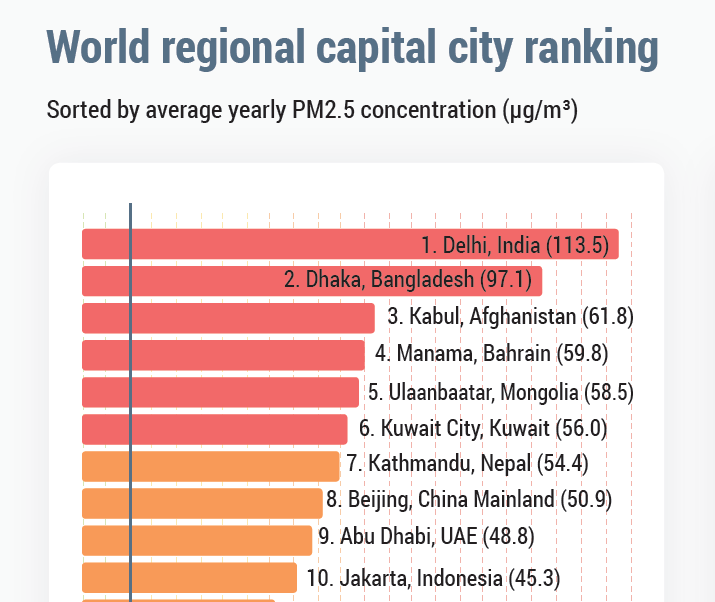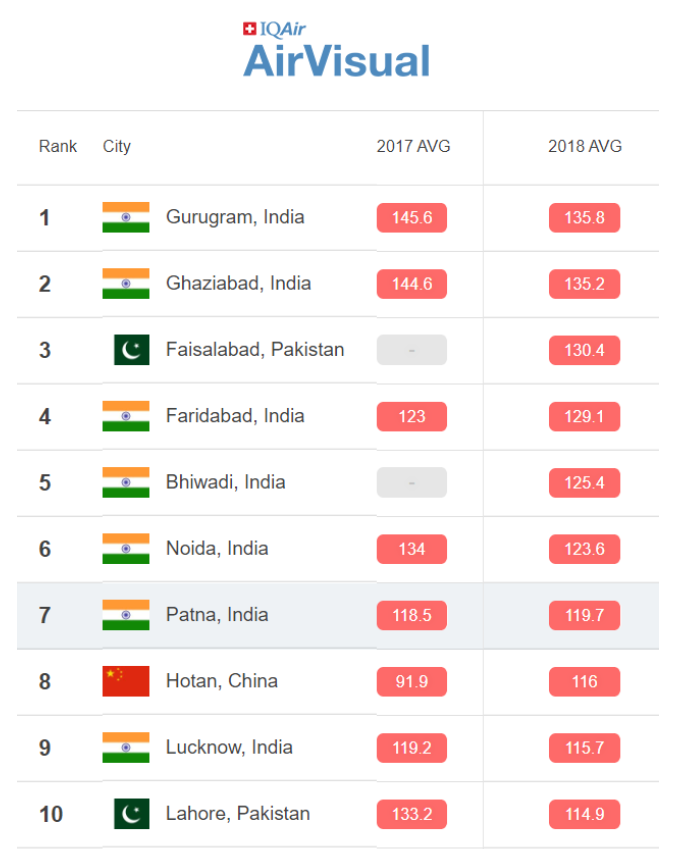Will green crackers reduce India’s air pollution during the 2019 Diwali?
India’s Festival of Lights usually darkens the sky with thick smog. This year, Diwali falls on Sunday, October 27, and there is only one kind of legal firework: quiet and eco-friendly.
Just before Diwali last year, an Indian court effectively banned conventional fireworks because of pollution. It ruled that only “green firecrackers” within permitted noise levels and emissions norms could be sold. The case had been brought by Delhi residents concerned about the air they were breathing. The court ruling also restricted setting off fireworks on Diwali to a two-hour window.
Despite the Supreme Court order, Delhi air pollution still rose to hazardous levels during Diwali, which fell in November last year. PM2.5 levels soared to 380 micrograms per cubic meter (µg/m³), which is 420 on the U.S. Air Quality Index.This was almost double New Delhi’s November average of 194.2 µg/m³.
Most polluted capital cities

Delhi air quality is already bad. It was the world’s most polluted capital city last year, according to IQAir AirVisual’s 2018 World Air Quality Report. The main sources of pollution year-round include vehicle emissions and dust from construction. Unlike in Beijing, there is little wind to disperse pollutants.
The judges in the case said they had weighed up the right of fireworks manufacturers to make a living against the right of more than 1.3 billion Indians to a healthy life.
In the year since the ruling, many fireworks factories have closed, workers spent months on strike to protest the ban, and revenue has fallen for India’s fireworks manufacturing industry, the world’s second largest after China.
Meanwhile, government scientists set about developing more eco-friendly fireworks – defined by the court as a cracker with an improved formulation or an all-new formulation.
They have reportedly replaced barium nitrate with another chemical. Ironically, barium nitrate emits green light and is what gives firecrackers a green color. A U.S. Army team found in 2011 that boron carbide could be used instead to reduce the toxic material released in pyrotechnics, which the military uses for signal flares and explosion simulations.1
India air quality

India air quality: Across the country, smog is the norm. Seven of the top 10 most polluted world cities were in India, according to IQAir AirVisual’s 2018 World Air Quality Report.
India’s science and technology minister announced earlier this month that scientists had delivered, and that green crackers that emit 30 percent less pollution were now available on the market.
These “environmentally-friendly” firecrackers that include flower pots and sparklers will carry a green logo and a QR code, said Science and Technology Minister Harsh Vardhan. Scan the code and you should see which chemicals make up the cracker.2
He said that 165 fireworks manufacturers had already started to make crackers that met the “green” standard and a further 65 were in the process of coming on board.
Despite the announcement, parents who want to set a green example are unsure what to buy.3 A lot of the green stock was shipped before the government agreed to the idea of a QR code to identify genuine manufacturers.
There is still likely to be a significant supply of more polluting fireworks as factories had stock leftover from last year and workers who went on strike started making illegal firecrackers at home.4
The number one air cleaning solution for your home.
Lorem ipsum Donec ipsum consectetur metus a conubia velit lacinia viverra consectetur vehicula Donec tincidunt lorem.
TALK TO AN EXPERTArticle Resources
Article Resources





